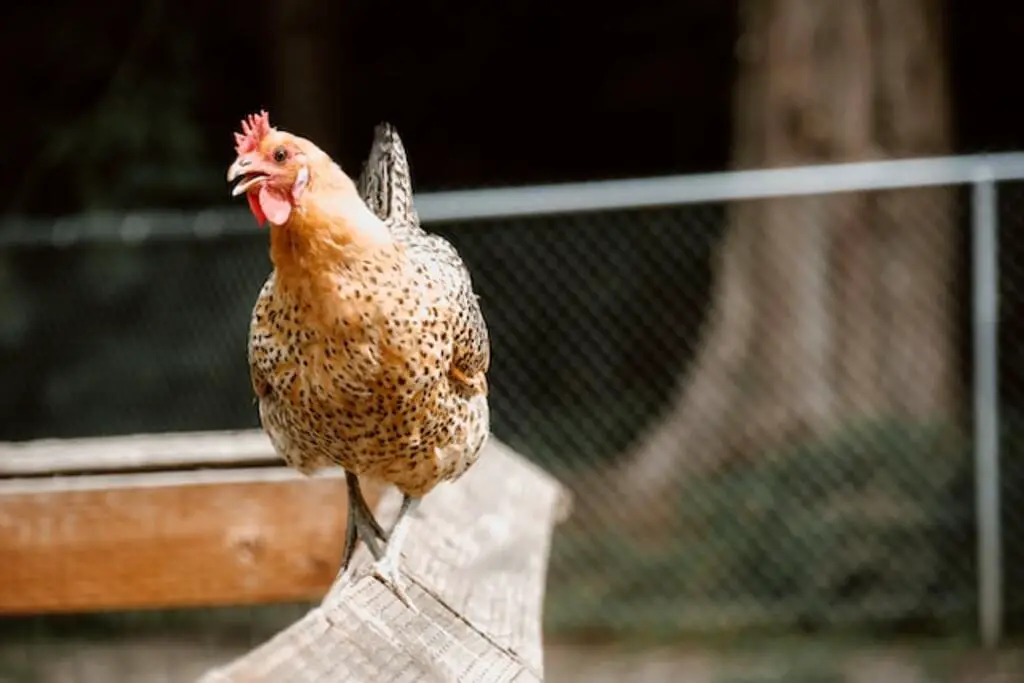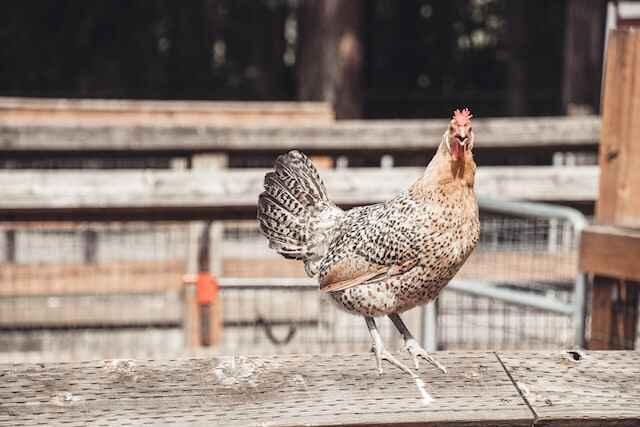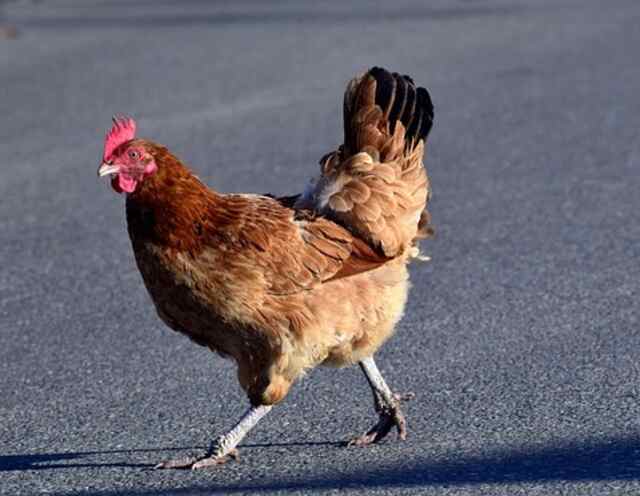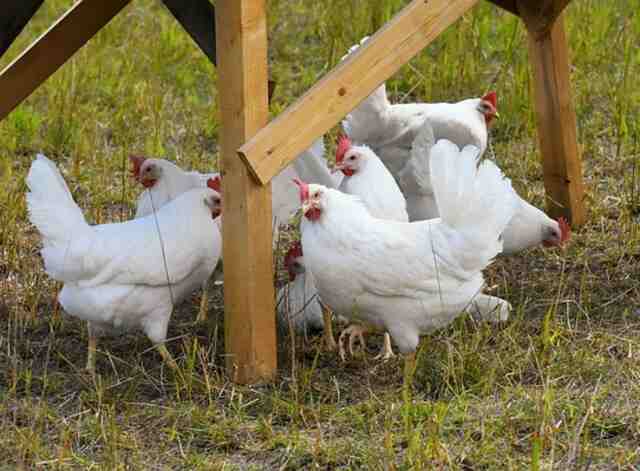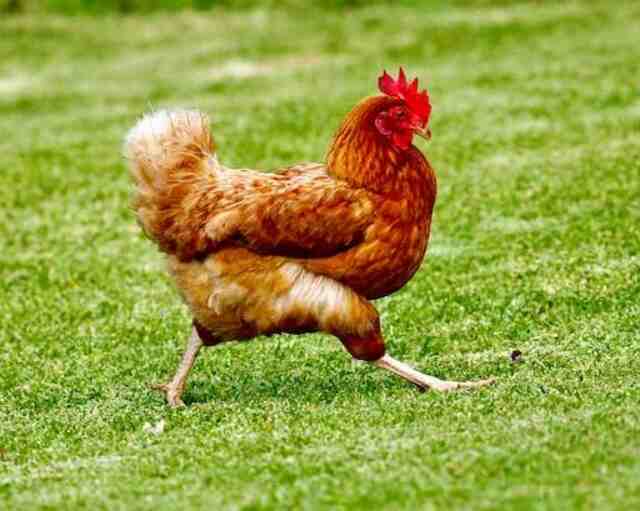When we think of flying birds, eagles and sparrows come to mind, but what about chickens? Can chickens fly? While chickens can take to the air, their flight abilities are quite limited. In this post, we’ll explore the science behind chicken flight, examining their anatomy, evolution, and what makes their flight so unique. Let’s dive into the intriguing world of chicken flight!
Table of Contents
- 1 Can Chickens Fly?
- 2 Can Chickens Fly Over Fences?
- 3 How Far Can Chickens Fly?
- 4 Why Can’t Chickens Fly?
- 5 Can Chickens Fly Away?
- 6 How High Can Chickens Fly?
- 7 How Long Can Chickens Fly?
- 8 Do Chickens Fly or Glide?
- 9 Can Chickens Fly Into Trees?
- 10 Can Chickens Fly High?
- 11 Can Chickens Fly Over a 6-Foot Fence?
- 12 Can Chickens Fly Over a 4-Foot Fence?
- 13 Can Chickens Fly with Clipped Wings?
- 14 How High Can Chickens Fly with Clipped Wings?
- 15 How High Can Chickens Fly Without Clipped Wings?
- 16 At What Age Can Chickens Fly?
- 17 How High Can Chickens Jump?
- 18 Can Wild Chickens Fly?
- 19 Can Silkie Chickens Fly?
- 20 Can Bantam Chickens Fly?
- 21 Can Bin Chickens Fly?
- 22 Can Baby Chickens Fly?
- 23 Can Prairie Chickens Fly?
- 24 Can Rhode Island Red Chickens Fly?
- 25 Can Any Chickens Fly?
- 26 Can Serama Chickens Fly?
- 27 Author
Can Chickens Fly?
Contrary to popular belief, chickens are not incapable of flight. While they may not have the same level of aerial agility as other birds, chickens do possess wings and the ability to use them to take to the sky. However, their flying abilities are somewhat limited compared to other birds, and for good reason.
Chickens evolved from wild jungle fowl, which primarily used their wings for short bursts of flight to escape predators or roost in trees at night. Over time, domestication and selective breeding for meat and egg production resulted in chickens with larger bodies and shorter wings, limiting their flying capabilities.
But don’t let their lack of grace in the air fool you – chickens can still fly, just not for long distances or extended periods of time. They are able to flap their wings and take off from the ground, but usually only for short distances or to reach a low perch.
So why don’t we see chickens flying around our backyards? One reason is that their wings have been bred to be smaller and less effective for flight. This makes them less able to escape predators or fly long distances, but it also allows them to use their energy more efficiently for producing eggs and meat.
Another reason is that chickens have been domesticated for thousands of years, and most breeds have become accustomed to living on the ground. This means that they may not feel the need to fly as much as wild birds, and their wings may not be as well-used and developed.
Can Chickens Fly Over Fences?
No, chickens cannot fly over fences. They may be able to flap their wings and flutter high enough to get over the fence, but they won’t be able to sustain the height needed to clear it. Chickens don’t have the same flight capabilities as other birds, such as ducks or geese, and don’t have the same muscle strength or stamina in their wings.
This is because chickens have been selectively bred over centuries to be raised for meat, eggs, and other products, rather than for their flight capabilities. For example, larger chickens have been bred to produce more meat, while smaller chickens have been bred to require less space and feed, which have both affected the bird’s ability to fly.
In addition, chickens tend to be heavier than other birds, making it more difficult for them to lift off the ground and sustain flight. That being said, chickens can still attempt to fly in short bursts, with some breeds being capable of flying up to a few feet into the air or over short distances.
How Far Can Chickens Fly?
Chickens are not known to be great flyers, but they are still capable of taking off and flying short distances. Most chickens can fly up to a few feet off the ground, and some breeds may be able to fly even higher.
The average chicken can fly up to around 10 feet, but some breeds like the Leghorn and Sebright can reach heights of up to 15 feet. The distance they can fly will also depend on the bird’s size and weight.
Heavier birds will have a harder time getting off the ground and will not be able to reach the same heights as lighter birds. Additionally, the age of the bird will also affect how far it can fly.
Younger birds will usually be able to fly higher than older birds, due to their increased strength and agility. Ultimately, the exact distance a chicken can fly will vary between breeds and individuals, but in general, chickens can usually fly up to 10-15 feet.
Why Can’t Chickens Fly?
Chickens are one of the most popularly domesticated animals in the world, and yet they are unable to fly. This is due to several characteristics that differ between birds that can fly and chickens. For example, flying birds have hollow bones that are lightweight, while a chicken’s bones are not completely hollow, making it heavy to fly.
The size of a chicken also contributes to its inability to fly. Chickens are generally much larger than other flying birds, which makes it harder for them to generate enough lift to get off the ground. Additionally, chickens have small wings that make it difficult for them to generate enough thrust to keep them in the air.
Finally, chickens have more muscle mass than flying birds, which contributes to their heavier weight and limits their ability to fly. While chickens may not be able to fly, they can still move around quickly, making them great for raising in a backyard.
Can Chickens Fly Away?
It depends on several factors, such as the type of chicken, its age, health, and weight. Generally, chickens are not built to fly long distances and can only manage short bursts of flight or gliding, and most breeds have wings that are too small and weak to sustain flight for more than a few seconds.
Some chickens, such as the bantam varieties, have been bred to have larger wings and stronger muscles, allowing them to fly short distances. However, even these breeds cannot fly for long periods of time or cover great distances. The size and weight of chickens also play a role in their ability to fly.
Heavier chickens will have a more difficult time taking off and staying in the air. If a chicken is overweight, it is unlikely to be able to fly away. Additionally, chickens that are young or sick may have weakened wings or be too tired to fly very far. Overall, the ability of chickens to fly away is limited.
While some breeds are capable of flying short distances, most chickens cannot fly for more than a few seconds. In order for a chicken to take flight, it must be of a suitable breed, healthy, and not be overweight.
How High Can Chickens Fly?
When it comes to the question of how high chickens can fly, the answer is actually quite complicated. Chickens are not built for sustained long-distance flight, so they tend to only fly short distances.
Generally speaking, most chickens can only fly for a few seconds before they become exhausted, and the highest they can reach is about 10 feet. However, there are some breeds of chickens that are known to be able to fly higher, sometimes as high as 20 feet.
This is generally only possible if the chicken is given a running start, as this way they can get enough lift to reach greater heights. In addition, the environment that chickens are kept in can also affect their ability to fly, as they will have more energy if they are kept in a spacious and open environment.
Ultimately, while chickens may not have the ability to soar at heights comparable to some other types of birds, they can still reach respectable heights given the right conditions.
How Long Can Chickens Fly?
Chickens have the ability to fly, but generally not for very long. Chickens are not built like other birds, so they can only stay in the air for short amounts of time. On average, chickens can fly for a distance of up to 300 feet, and a maximum height of 10 feet.
Chickens are designed to run and take short flights, so their wingspan is not as large as other birds, like eagles and hawks. Chickens also have a smaller chest cavity than other birds, which doesn’t allow for long-distance flight.
As a result, chickens typically can’t fly for more than a few seconds at a time. In addition, chickens must take multiple breaks to rest, as their wings can become tired quickly.
If a chicken is particularly healthy and well-exercised, it may be able to stay in the air for a little bit longer. However, typically, chickens can only fly for short distances and short periods of time.
Do Chickens Fly or Glide?
When it comes to chickens, there is often confusion about whether they can actually fly or just glide. The answer to this question is yes, chickens can fly and glide. However, their ability to do so is far from that of other birds, such as pigeons and hawks. Chickens can flap their wings and generate enough lift to get off the ground, but they are unable to fly for long distances or at high speeds.
Instead, they typically use their wings to glide and sometimes flap their wings to help them steer. When they do flap their wings, they tend to do so in short bursts, and some chickens will even use their wings to help them climb hills or trees.
While chickens are able to fly and glide, their main flight capabilities are limited to gliding and short bursts of flapping. This is why chickens are often found walking or running on the ground rather than taking to the air.
Can Chickens Fly Into Trees?
Chickens have wings, and some chickens can indeed fly up into trees, although not all chickens possess the strength or ability to do so. Chickens typically only fly short distances and tend to stay close to the ground, so if they find themselves in a tree, it is usually because they ended up there by accident or because they were chased up there by a predator.
Chickens that are kept in confined areas, such as backyard chickens, are unlikely to be able to fly into trees due to their reduced wing strength and the lack of open space. However, certain breeds of chickens, such as the Leghorn and the Orpington, are known for their flying abilities and can sometimes make it up into trees.
In addition, chickens can often make it onto lower branches of trees if they jump off of a higher object, such as a fence or a barn roof.
Can Chickens Fly High?
Chickens are not built for flight like their avian cousins, the birds, and are unable to fly for long distances or for any extended amount of time. However, chickens do have some ability to flap their wings and propel themselves upwards, allowing them to get off the ground and even fly for short distances.
This is referred to as ‘flapping flight’ and it’s what allows chickens to escape predators or to get away from humans if they feel threatened. While they may not be able to fly to great heights, they can reach some altitude, depending on the breed and strength of the breed.
For example, a breed of chicken known as the ‘Malay’ is known to have the longest flight of any chicken breed, reaching heights of up to 10 meters.
Even so, this is still a relatively low height compared to most other birds, so chickens won’t be seen soaring high above the clouds anytime soon.
Can Chickens Fly Over a 6-Foot Fence?
It depends largely on the breed of chicken and the individual bird. Generally speaking, most chickens cannot fly high enough to clear a six-foot fence. The heaviest standard breed of chicken, the Jersey Giant, can weigh up to 14 pounds and has wings that are not powerful enough to lift it over a fence that is six feet or higher.
The same holds true for most other chicken breeds, including Leghorns and Orpingtons. However, some smaller breeds such as Bantams may be able to fly over a six-foot fence. Bantams are much smaller than other chickens and weigh only a few pounds, so their wings are able to generate enough lift to clear a six-foot fence.
In addition, some chickens may be able to fly over a six-foot fence if they have been trained to do so. With proper training, chickens can be taught to fly higher and farther than they normally would.
Can Chickens Fly Over a 4-Foot Fence?
Chickens can fly over short distances, and depending on the breed, they may be able to fly over a 4-foot fence. Some breeds can reach heights of up to 10 feet, though this is rare. These breeds may be able to fly over a 4-foot fence, though the more common breeds are generally limited to heights of about 3-4 feet.
Even if the breed is capable of flying over a 4-foot fence, it is important to note that chickens have a limited amount of energy to expend on flying, so they may not make it over in one go. It may take a few attempts before they can make it over the fence.
In addition, chickens may be reluctant to fly over a 4-foot fence if they are not used to it, so it is important to provide them with plenty of encouragement to do so.
Can Chickens Fly with Clipped Wings?
Yes, but only for short distances. Chickens are capable of flying, although they usually prefer to walk. However, their wings can be clipped for a variety of reasons, such as to prevent them from escaping their coop, or as part of a grooming process to prevent them from developing infections.
When their wings are clipped, chickens are unable to fly as high or as far as they would if their wings were not trimmed. But they can still take off from the ground or perch, and they can fly short distances, usually no more than a few feet.
It is important to note that while chickens with clipped wings can still fly, they can become fatigued quickly, so they should not be allowed to fly for extended periods of time.
Additionally, chickens with clipped wings should always be supervised when they are outdoors, as the lack of lift makes them more vulnerable to predators.
How High Can Chickens Fly with Clipped Wings?
This is a common practice among chicken owners to prevent them from escaping or damaging their surroundings. With clipped wings, chickens can only fly short distances and will typically only be able to reach heights of a few feet.
This is because the primary function of a chicken’s wings is to provide lift and help them take off, rather than to propel them through the air. Without the ability to fully extend their wings and gain lift, chickens will struggle to achieve the same level of altitude as they would with unclipped wings.
In addition to limiting their ability to fly, clipped wings can also affect a chicken’s overall health and wellbeing. Without the ability to engage in natural behaviors such as flying and roosting, chickens may become bored and stressed, leading to decreased egg production and other health issues.
For this reason, it is important to consider the long-term impacts of clipping a chicken’s wings and to provide them with plenty of opportunities for physical activity and enrichment.
How High Can Chickens Fly Without Clipped Wings?
Chickens are capable of flight, albeit limited in distance and altitude due to their plump body shape, short wingspan, and relatively low muscle mass. Generally, unclipped chickens can fly up to a height of around 10 feet, and distances of about 20 feet.
However, some breeds of chicken, such as the Cornish Cross, can fly slightly higher and further due to their slightly larger size and higher muscle mass. Additionally, the breed of the chicken, its age, and the environment in which it is kept can also influence its flight capabilities.
For instance, younger chickens tend to fly higher and further than older chickens, and certain environmental factors, such as wind and temperature, can also impact how high chickens can fly. Lastly, if a chicken’s wings are not clipped, it can fly higher and further than if its wings were clipped, as the feathers on its wings will provide it with more lift.
At What Age Can Chickens Fly?
Surprisingly, chickens are able to fly from a very young age, with most being able to take flight when they are just a few weeks old. Although they may not be able to fly very far or very high, they are able to take off from the ground and soar through the air.
As they grow older and their muscles and wings become stronger, their ability to fly increases. Adult chickens can fly up to 10 feet in the air and can even reach heights of up to 20 feet.
In addition to the height and distance they can reach, older chickens are also able to fly for longer periods of time and can cover greater distances. It is important to note, however, that chickens can only fly for a few minutes at a time, and they need to rest between flights.
How High Can Chickens Jump?
Chickens are surprisingly athletic animals, and they have an impressive ability to jump. While their vertical jumping ability isn’t as impressive as some other species, chickens can still jump surprisingly high.
On average, chickens can jump up to a height of around three feet, though some individual chickens may be able to jump higher. This is especially true for younger, healthier chickens, who will have more strength and agility than their older counterparts.
In addition to jumping vertically, chickens can also jump horizontally, allowing them to navigate obstacles and escape predators. These jumps can reach up to six feet in some cases. Overall, chickens have impressive jumping abilities that are sure to surprise anyone who underestimates them.
Can Wild Chickens Fly?
Wild chickens, also known as red junglefowl, are the ancestors of domesticated chickens and the only species in the genus Gallus. Despite the name, wild chickens are not necessarily “wild” by nature, as they have been domesticated for centuries. Nonetheless, their natural behavior is still seen in their wild relatives.
One of the most interesting things about wild chickens is their ability to fly. Despite having heavier bodies than other birds, wild chickens are surprisingly adept flyers, allowing them to quickly escape from predators.
However, the ability to fly comes at a cost – they are unable to fly very long distances. Studies suggest that wild chickens fly only a few meters off the ground, and can only remain airborne for a few seconds.
This is why domesticated chickens have been bred over the years to have larger, heavier bodies – so that they are unable to fly and remain in their coops.
Can Silkie Chickens Fly?
No, silkie chickens cannot fly. This is because they are a bantam breed of chicken, meaning they are a smaller, miniature version of the standard chicken. Silkie chickens are a very popular pet chicken due to their unique and endearing features, such as their fluffy feathers, which look like fur, and five toes on each foot, as opposed to the normal four.
However, the downside of having fluffy feathers is that it reduces their ability to fly considerably. Additionally, the Silkie’s small size and heavier body weight, which is due to its dense feathers, means they are not as well-equipped to take off and stay in the air like other chickens. So, while Silkie chickens may be able to flap their wings and get a few feet off the ground, they are unable to truly fly.
Can Bantam Chickens Fly?
Bantam chickens are a small breed of chicken that is known for their diminutive size. While they are often smaller than their larger counterparts, this does not necessarily mean that they are unable to fly. In fact, bantam chickens can fly for short distances. They are not very strong fliers, however, and typically cannot fly for large distances.
This is because their wings are not as strong as larger breeds of chickens, and they lack the stamina and muscle power to stay in the air for long periods of time. Bantam chickens can usually take off and land without much effort, but they can only manage short flights.
Some bantam chickens may also be able to soar and glide, but this is not common. Therefore, if you are looking to keep bantam chickens in your backyard, you should consider whether your property has enough space and protection for them to take off, land, and move around without having to fly.
Can Bin Chickens Fly?
No, bin chickens cannot fly. Bin chickens are a type of chicken that is bred for their meat, and as such, they have been selectively bred to be larger and heavier than their wild counterparts. This means that they have been bred to be too heavy and too uncoordinated to fly.
In the wild, chickens are able to fly short distances in order to escape predators, but bin chickens are not able to do this. The larger body size and lack of agility and coordination make it impossible for these chickens to lift themselves off the ground and into the air.
In addition, bin chickens have shorter wings than wild chickens, which further prevents them from flying. While these chickens may have the instinct to fly, their bodies are simply not built for it.
Can Baby Chickens Fly?
The answer is a bit complicated, as it depends on the breed of chicken, the age of the chicken, and the environment in which it is raised. Generally speaking, baby chickens, or chicks, cannot fly. Chicks tend to have undeveloped wings and flight muscles, meaning they are not able to gain the lift needed to fly.
However, some breeds of chickens, such as the Silkie, are known for having a higher propensity for flight than other breeds. This is because Silkies have larger, fluffier wings than other breeds, giving them a greater lift capacity.
Additionally, as chicks get older and grow more developed wings, they may become more capable of flight. In the right environment, such as an open field or a large backyard, some chicks may be able to fly short distances.
Ultimately, while baby chickens may not be able to fly, some breeds and older chicks may be capable of limited flight in the right conditions.
Can Prairie Chickens Fly?
Prairie chickens, or scientific name Tympanuchus cupido, are a species of grouse found in the grasslands of the Midwest United States. Although they have wings, these birds are not able to fly long distances. While they can take off from the ground and fly short distances, they are not able to sustain the flight for more than a few seconds.
This is due to the fact that their wings are too short and weak to provide the necessary lift to keep them aloft. Instead, they rely on their strong legs to escape danger and find food. They can run up to 30 mph and even use their wings to help them run by flapping them in a zig-zag motion.
Prairie chickens often use the cover of tall grass to hide from predators, and they will also run in circles to confuse them. All in all, prairie chickens may not be able to take to the skies, but they are incredibly resourceful in their own way.
Can Rhode Island Red Chickens Fly?
No, Rhode Island Red chickens cannot fly. Their large size and weight is the reason for this. Rhode Island Reds are medium to large chickens, weighing in at around 6-8 pounds. This size and weight makes it difficult for them to fly, as they lack the ability to generate enough lift to remain airborne for any length of time.
Rhode Island Reds are also bred for their meat, which is why they have been bred to be larger. The birds’ size and weight are also beneficial to them in other ways, such as keeping them safe from predators. The birds’ large size also helps to keep them warm in cold weather, as they have plenty of insulation.
While Rhode Island Reds cannot fly, they can still move around quickly and easily, making them good foragers. They also have a good temperament and are quite docile, making them an ideal choice for many backyard chicken keepers.
Can Any Chickens Fly?
No, not all chicken breeds are able to fly. In fact, most domesticated chickens are bred to not fly. The ability to fly is often bred out of chickens to make them easier to raise, as flying chickens can escape their enclosures and become lost.
However, some chickens are still able to fly short distances if they have not been specifically bred to not fly. These breeds have an innate desire to fly, and will sometimes jump and try to take flight if they are not contained.
Breeds that are more likely to be able to fly include the Malay, Sumatra, and Cochin. While these breeds can fly, they typically only fly short distances and are not able to stay airborne for long.
Can Serama Chickens Fly?
Serama chickens are a type of bantam chicken, which means they are a smaller breed of chicken compared to other types. The exact origins of this breed are a bit of a mystery, however, they are thought to have originated from Malaysia. Serama chickens can fly, however, not very far or for very long.
The average serama chicken can fly up to a few feet high and a few feet in length. They tend to fly in short bursts and never really take off, and they usually can’t fly more than a few yards. This is due to the fact that they have small wings, and they also don’t have much muscle mass to power them through the air.
As a result, most people who keep serama chickens will clip their wings in order to keep them from flying away or getting into trouble. They are, however, capable of leaping to great heights, and have even been known to jump onto tables and other objects.
Their agility and quickness also make them excellent hunters of insects, which can help keep your garden or backyard free of pests.
Related Post:

